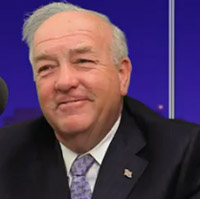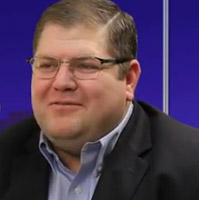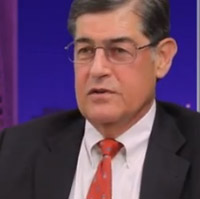Embracing Respectful Conflict

What is embracing respectful conflict? Upon hearing the phrase “embrace respectful conflict,” people often won’t have a clue what it means, but in fact, embracing respectful conflict is a key component in building trust within a team.
A fact of life
Almost no one agrees on everything. People have their own opinions, ideas and procedures. In a business setting, one may aggressively, even disrespectfully, argue a point, hoping to appear right, smart or good at their job. This obviously causes significant short and long-term problems. While other people may avoid conflict altogether, Joel Peterson, Chairman of JetBlue and successful executive said, “You may have a very quiet organization that appears respectful, but it’s quiet like a hospital is quiet, there’s disease everywhere.” Avoiding conflict is not a good way to build trust within a company, but rather embrace conflict in a respectful manner.
When teams learn how to disagree, they fracture less often, get to conclusions faster and can implement initiatives with greater precision and understanding. When questions go unasked for fear of retribution or stirring the pot, the end product becomes a messy stew of partially fulfilled potential, and not the specific soup that was intended to satisfy a needy pallet in the exact intended manner.
How and why does this build trust?
In his book The 10 Laws of Trust, Petersen says the following, “When parties disagree openly in a spirit of mutual respect and move towards—not away from—problems, trust grows rather than recedes.” There isn’t one way to solve any problem, as everyone has their own ideas, many of which have potential to conflict with each other. Placing conflicting ideas out on the table for respectful discussion not only grows your own ideas and understandings, but also allows all parties to grow trust in co-workers and strengthens the bond within a team.
Seek out potential conflict and obliterate it before it ever arises. Mike Mayatt, a writer of Forbes magazine says the following, “By actually seeking out areas of potential conflict and proactively intervening in a just and decisive fashion you will likely prevent certain conflicts from ever arising.” Why endeavor to solve conflict when it arises, or better yet, work to nip it in the bud? Many feel conflict is easier to ignore than solve. In reality, as soon as conflict raises its ugly head, swift, honest and polite discussions are in everyone’s best interest.
It starts at the top.
The need for being polite cannot be overstated, and it usually begins at the top. When the CEO or leader of a company, division, region, or department develops a habit of being short, because let’s face it, we all have a lot on our plates, and we need to move on to the next dozen fires to put out as quickly as possible. And sometimes being short or rude is perfectly understandable; but that’s when it’s the most important to stay calm and polite. That young, admittedly ignorant, staff member with poor situational understanding, might be wasting a little of your time now, but the more enlightened future version may actually be the most talented in the entire organization, and to reap the benefit of their talent, the organization’s leadership better politely nurtured them with and environment that can make the most of them through respectful dialog and conflict, or risk getting a fraction of their true value, or worse, seeing a competitor get 100%!
In conclusion
Putting off a discussion about conflict will only allow problems to fester and grow, developing a culture that promotes respectful conflicts and eliminating non-respectful conflicts in all their forms the moment they arise, will aid in productivity, building trust and avoiding problems for you and your team.
We hope you found this updated article about embracing respectful conflict helpful. Please note, we make no claims of this article being complete on the topic, merely sharing the author’s perspective. If you have questions or need expert tax or family office advice that’s refreshingly objective (we never sell investments), please contact us or visit our Family office page or our home page www.GROCO.com. Unfortunately, we no longer give advice to other tax professionals gratis.
To receive our free newsletter, contact us here.
Subscribe to our YouTube Channel for more updates.
Considerately yours,
GROCO, GROCO Tax, GROCO Technology, GROCO Advisory Services, GROCO Consulting Services, GROCO Relationship Services, GROCO Consulting/Advisory Services, GROCO Family Office Wealth, and GROCO Family Office Services.
Mechanics Bank CEO | Steve Buster
Episode Transcript of: Mechanics Bank CEO | Steve Buster Alan Welcome back. I’m here today with Steve Buster. Steve is an accomplished executive here in Silicon Valley where he spent several years as a CEO of a regional bank, and then went over to a life science company. And I’d like to talk about…
Performance Management | Justin Hyde
Episode Transcript of: Performance Management | Justin Hyde Alan Welcome back. I’m here today with Justin Hyde. He’s a founding partner at the Hyde Norton group, a company focused on performance management. Justin, welcome to today’s show. Justin Thanks, Alan, I appreciate you having me out. Alan So Justin, can you give me some background…
Money Habits | Megan Lathrop
Episode Transcript of: Money Habits | Megan Lathrop Alan Welcome back. We’re here today with Megan Lathrop. She’s a money coach, certified financial planner, and also an author. Megan, welcome in today’s show. Thank you. So thinking, give us some of your background. How did you get to where you are today? Megan Sure,…
Succession Planning | Cameron Carlson
Episode Transcript of: Succession Planning | Cameron Carlson Alan Welcome back. We have with us today, Cam Carlson. He is the president of Carlson Hammann, a consulting firm specializing in succession planning and exit strategies. Ken, welcome to today’s show. Cameron Thank you, Alan. It’s good to be here. Alan So give me some background…




